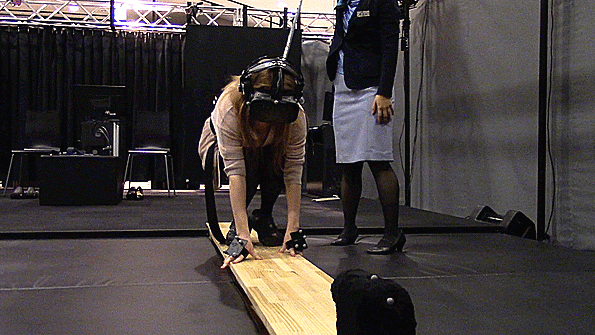
Two of RocketNews24’s VR virgins get to grips with virtual reality—but does the new technology live up to the hype?
My fellow RocketNews24 writer Preston and I recently had the opportunity to try out a handful of virtual reality setups at a special event being held for a limited time in Odaiba, Tokyo, called VR Zone Project i Can. While I’d watched plenty of hilarious videos of my fellow reporters and YouTubers wearing silly VR goggles and freaking out as various digital creatures lunged at them, none of it had prepared me for the reality of virtual reality, and I still wasn’t quite sure what to expect.
“I still wasn’t convinced that I’d fall for it.”
The word “immersive” is often used when virtual reality is discussed in print and online. In truth, this is something I’d always scoffed at, writing it off as a buzzword thrown around by those in the industry and then latched on to by the media, but it turns out that is exactly how I would describe my own VR experience. Even as I walked into the room and heard the headset-wearing attendees screeching and laughing around me, I still wasn’t convinced that I’d fall for it. I’ve played video games for decades—there’s no way my brain would be tricked into thinking that I was anywhere but an exhibition hall with a plastic box strapped to my face.
Oh boy, was I wrong.
Now that you’ve had a good laugh at our reactions, let’s get down to the nitty-gritty.
We were given an hour and a half to try out the six experiences on offer, and we managed to get through four of them. (The only two we missed out on were train and racing simulators, which probably wouldn’t have made for such embarrassing captivating footage.) You pay on a per-play basis at the event using a card that you can charge at stations within the area, with each game costing between 700 and 1,000 yen (US$6.50–$9.00) per try.
▼ The VR lineup
▼ Blade-wielding nurses with glowing eyes! What could possibly be scary about that?
Perhaps naively, we opted for the horror experience first, a grueling 12-minute-long “ride” through an abandoned hospital—or, more accurately, a dark, terrifying building filled with blood, guts, grotesque creatures, and heart-stopping jump-scares. You play as a character in a wheelchair, using joysticks to move forwards and backwards, although you’re essentially on a set path, so the experience is similar to journeying through a haunted house.
“I felt trapped in the game”
Before settling into our seats, we were warned by the booth attendant that the experience was most definitely not for the faint of heart, and she wasn’t kidding. The moment the headset and earphones were placed on my head, I felt trapped in the game. Moving slowly past the grisly set-pieces akin to something out of a Saw movie, I felt completely cut off from the real world to the point that the virtual one very quickly felt like my new reality. When you’re playing a video game, no matter how scary it is, you’re still somewhat removed from what’s going on on the screen, but that feeling of distance shrinks considerably when it comes to VR. The sense of immersion is very real.
Okay, confession time: we both called it quits less than half way into the game! For a very first experience with VR I think we overstretched ourselves a little! Suffice it to say, if you’re not a fan of horror games to begin with, you’ll want to steer well clear of anything remotely scary on VR.
My second experience was a skiing simulator, which involved standing on a machine similar to a cross-trainer at the gym and leaning left and right to steer. Again, the headset convinced my brain that I really was in the virtual environment, suddenly atop a snowy mountain and whizzing through snowdrifts, to the point that I swear I actually began to feel cold! Unfortunately I wasn’t very good at controlling my skis and it turned out to be almost as terrifying as the actual horror game as I crashed into rocks and sailed off cliffs. However, I have a feeling this might have more to do with the fact that I’ve never actually skied in my life, so I’m sure it’ll be great fun for avid skiers who are missing the slopes.
Upon removing the headset, however, I have to admit I felt a bit queasy. The issue of nausea often comes up when discussing virtual reality, and eliminating it is something the hardware’s designers have worked hard to achieve, so it was something I was wary of going in. It wasn’t too much of a problem for me in-game, however, and mostly set in after the headset was off and my brain readjusted to longer being in perceived motion. This is definitely something to watch out for if you have a tendency to get sick on theme park rides, but the benefit here is that you’re not stuck until the ride is over; you can turn it off at any time if it gets to be too much, and the feeling passed quite quickly afterwards.
▼ Another of the VR experiences we tried—this one putting us in control of a giant mecha.
The headset used for all the different setups at Bandai Namco’s event is the HTC Vive, the model that received the full backing of Valve, the same company that brought us the Steam software distribution system. In truth, found it quite heavy and it sometimes pressed down on my noise to the point I had to breathe through my mouth—something that was especially troublesome in the mecha piloting/shooting game where you had to move your head to aim at the targets. Still, at least said game was, breathing issues aside, an enjoyable rather than a white-knuckle experience, plus it included a rather busty virtual anime lady helping you out with your mission (I’m sure there are many games in the works that will allow you to get more intimate with characters like this!).
“All was well and good until … CRACK! half of the plank snapped off.”
Probably the most bizarrely realistic sensation of the day came from the seven-minute-long “walk the plank” experience we saw in Bandai Namco’s promotional video last month. The game puts you in an elevator that shuttles you up to the top of a high-rise building where there is, inexplicably, nothing but a wooden plank sticking out over the ground far below, with a tiny cat sitting at the end of it awaiting rescue. It was my job to step out onto the plank—in both the virtual world and the real one—and inch my way towards the kitty (a real-world toy with sensors pinned to it) without falling off.
All was well and good until I had the “cat” in my hands, and then CRACK! half of the plank snapped off, leaving me with mere inches of wood to balance on. Cue being stuck at the end for a while, too scared to even turn around. Logically, I knew there was absolutely no danger, and yet I couldn’t override my base instincts to just freeze and stay where I was, lest I plummet to my certain death.
Overall I was blown away by my first virtual reality experience and, now that I have an idea of what to expect, I would jump at the chance to go back again. After finally trying VR for myself, I’m definitely interested in getting my hands on a headset for my own personal use, whether it be the HTC Vive, an Oculus Rift, or Sony’s Playstation VR headset. That being said, at this stage I’m still a bit concerned about the headsets becoming little more than something to whip out during parties, a gadget that I’d pull out when friends are over and, while we’d no doubt have a blast, never feel the need to use the rest of the time. What I experienced at Bandai Namco’s event is of course way beyond what the average home user will be getting, regardless of which headset they choose, what with the elaborate setups and specialized equipment. But I could totally see an event like this being made into a permanent attraction and becoming the game center for a new generation, where you can hang out at the weekend and experience the thrills of virtual reality without having to drop vast amounts of cash—after all, even the most budget-friendly option, PlayStation VR, is far from “cheap” at US$399.
Will virtual reality become a permanent part of our homes in the near future? Only time, and the quality of the software, will tell. Even so, it’s definitely true what they say about this new technology: you really have to experience virtual reality for yourself to truly appreciate it.
VR Zone: Project i Can experience will run until October and operates on a reservation-only basis. It’s definitely popular, so make your booking now to avoid disappointment! Reservations can be made online at the Project i Can website (Japanese only).
Photos & video © RocketNews24

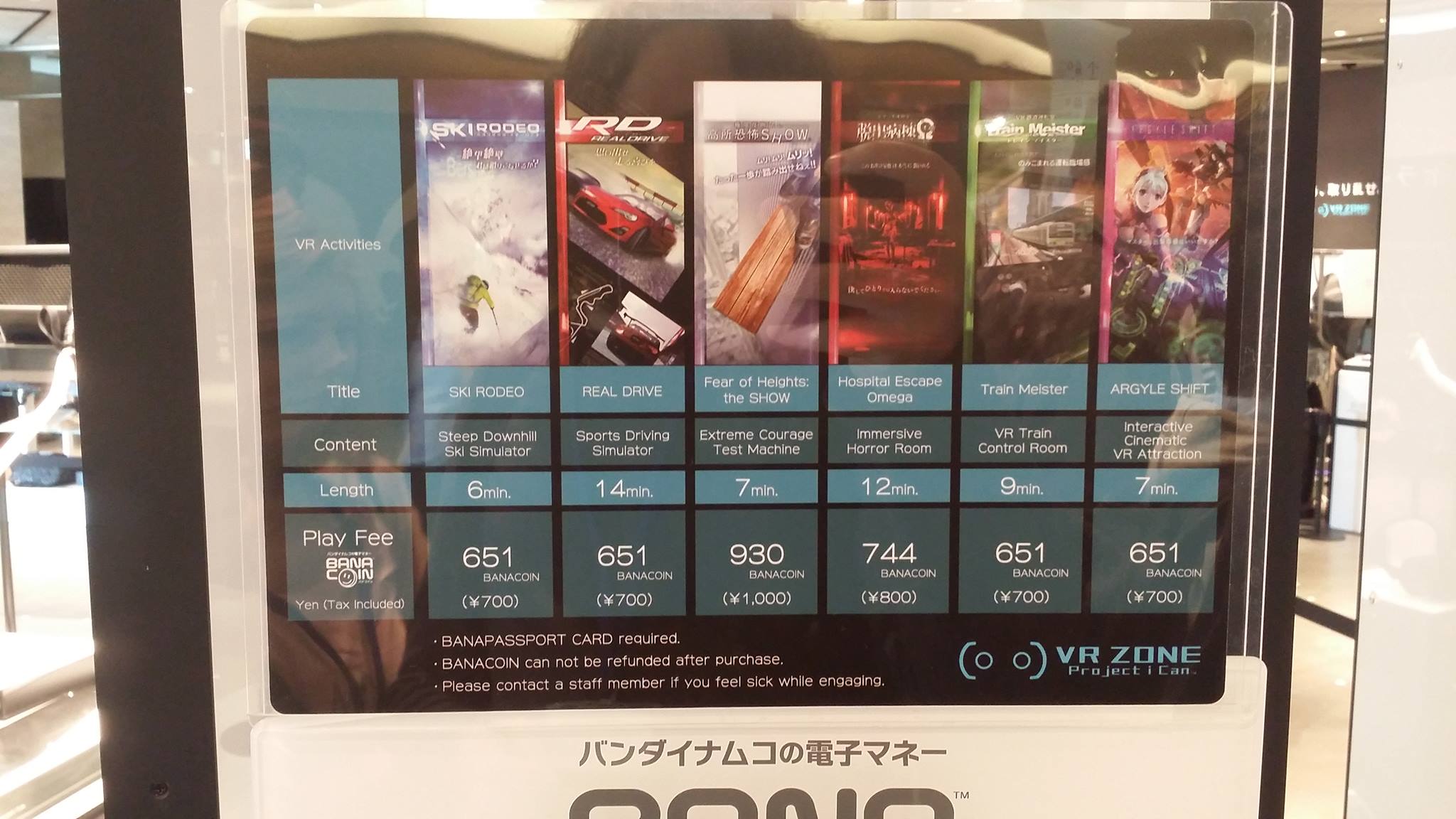
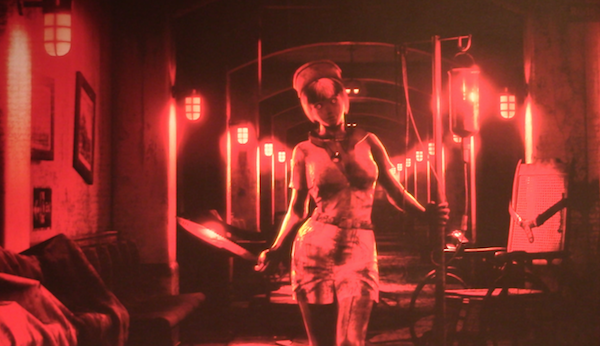
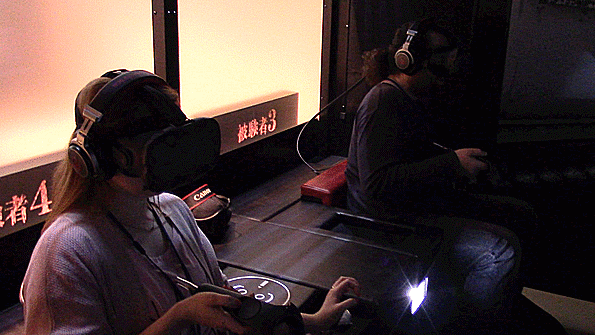
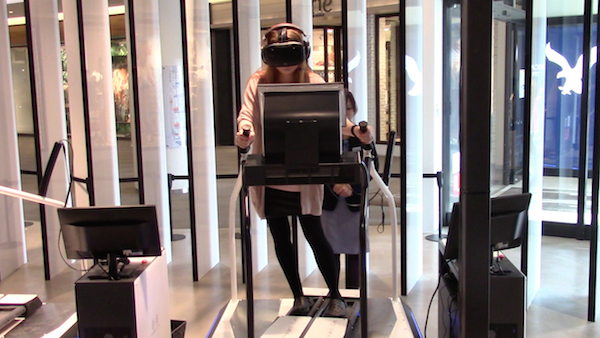

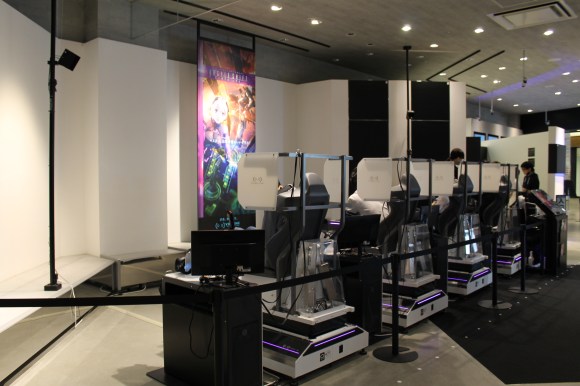
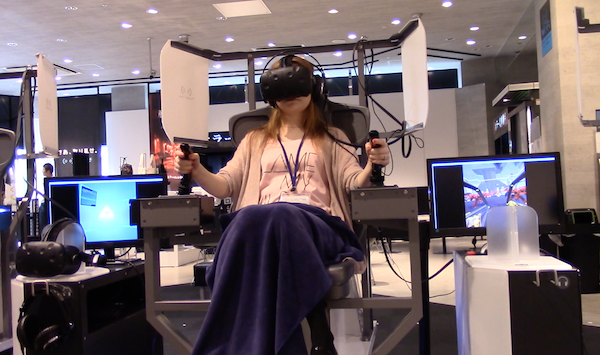
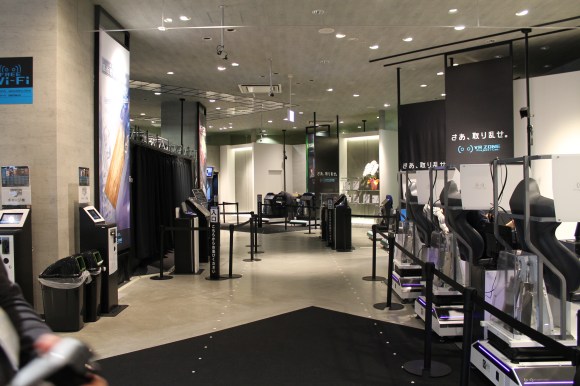
 You can now hang out with Totoro and explore Studio Ghibli worlds in virtual reality
You can now hang out with Totoro and explore Studio Ghibli worlds in virtual reality Oculus Rift vs Project Morpheus: The VR headsets duke it out at E3【RN24@E3】
Oculus Rift vs Project Morpheus: The VR headsets duke it out at E3【RN24@E3】 The new PlayStation VR comes with an adorable miniature PlayStation 4
The new PlayStation VR comes with an adorable miniature PlayStation 4 Japanese gamer shares PlayStation VR experience at virtual anime idol concert
Japanese gamer shares PlayStation VR experience at virtual anime idol concert Is the Nintendo Switch a viable VR platform?【Video】
Is the Nintendo Switch a viable VR platform?【Video】 Disney princesses get official manga makeovers for Manga Princess Cafe opening in Tokyo
Disney princesses get official manga makeovers for Manga Princess Cafe opening in Tokyo Randomly running into a great sushi lunch like this is one of the best things about eating in Tokyo
Randomly running into a great sushi lunch like this is one of the best things about eating in Tokyo Is the new Shinkansen Train Desk ticket worth it?
Is the new Shinkansen Train Desk ticket worth it? Beautiful new Final Fantasy T-shirt collection on the way from Uniqlo【Photos】
Beautiful new Final Fantasy T-shirt collection on the way from Uniqlo【Photos】 Osaka’s creepy cute mascot speaks for first time, adds more fuel the creepy OR cute debate【Video】
Osaka’s creepy cute mascot speaks for first time, adds more fuel the creepy OR cute debate【Video】 Hey, Japanese taxi driver! Take us to your favorite restaurant in Tsuruga City!
Hey, Japanese taxi driver! Take us to your favorite restaurant in Tsuruga City! Foreign English teachers in Japan pick their favorite Japanese-language phrases【Survey】
Foreign English teachers in Japan pick their favorite Japanese-language phrases【Survey】 Masahiko Ozumi Paris in Osaka makes the comfiest desserts around
Masahiko Ozumi Paris in Osaka makes the comfiest desserts around At this Kyoto shrine, be careful what you wish for—and how—, because you just might get it
At this Kyoto shrine, be careful what you wish for—and how—, because you just might get it Enjoy viewing Kyoto’s cherry blossoms from above on a guided zipline tour
Enjoy viewing Kyoto’s cherry blossoms from above on a guided zipline tour Our Japanese reporter visits Costco in the U.S., finds super American and very Japanese things
Our Japanese reporter visits Costco in the U.S., finds super American and very Japanese things New Studio Ghibli bedding sets are cool in all senses of the word
New Studio Ghibli bedding sets are cool in all senses of the word We try out “Chan Ramen”, an underground type of ramen popular in the ramen community
We try out “Chan Ramen”, an underground type of ramen popular in the ramen community New Pokémon cakes let you eat your way through Pikachu and all the Eevee evolutions
New Pokémon cakes let you eat your way through Pikachu and all the Eevee evolutions There’s a park inside Japan where you can also see Japan inside the park
There’s a park inside Japan where you can also see Japan inside the park Japanese black curry “experiment” takes place at an unlikely restaurant branch in Tokyo
Japanese black curry “experiment” takes place at an unlikely restaurant branch in Tokyo Japanese convenience store packs a whole bento into an onigiri rice ball
Japanese convenience store packs a whole bento into an onigiri rice ball New definition of “Japanese whiskey” goes into effect to prevent fakes from fooling overseas buyers
New definition of “Japanese whiskey” goes into effect to prevent fakes from fooling overseas buyers Uniqlo opens its first Furugi Project secondhand clothing pop-up shop in Tokyo
Uniqlo opens its first Furugi Project secondhand clothing pop-up shop in Tokyo Studio Ghibli releases Kiki’s Delivery Service chocolate cake pouches in Japan
Studio Ghibli releases Kiki’s Delivery Service chocolate cake pouches in Japan Japan’s bone-breaking and record-breaking roller coaster is permanently shutting down
Japan’s bone-breaking and record-breaking roller coaster is permanently shutting down Toyota built a life-sized Miraidon Pokémon and are letting people test drive it this weekend
Toyota built a life-sized Miraidon Pokémon and are letting people test drive it this weekend Foreign passenger shoves conductor on one of the last full runs for Japan’s Thunderbird train
Foreign passenger shoves conductor on one of the last full runs for Japan’s Thunderbird train Kyoto bans tourists from geisha alleys in Gion, with fines for those who don’t follow rules
Kyoto bans tourists from geisha alleys in Gion, with fines for those who don’t follow rules Studio Ghibli unveils Mother’s Day gift set that captures the love in My Neighbour Totoro
Studio Ghibli unveils Mother’s Day gift set that captures the love in My Neighbour Totoro Domino’s Japan now sells…pizza ears?
Domino’s Japan now sells…pizza ears? New Japanese KitKat flavour stars Sanrio characters, including Hello Kitty
New Japanese KitKat flavour stars Sanrio characters, including Hello Kitty Sales of Japan’s most convenient train ticket/shopping payment cards suspended indefinitely
Sales of Japan’s most convenient train ticket/shopping payment cards suspended indefinitely Sold-out Studio Ghibli desktop humidifiers are back so Totoro can help you through the dry season
Sold-out Studio Ghibli desktop humidifiers are back so Totoro can help you through the dry season Japanese government to make first change to romanization spelling rules since the 1950s
Japanese government to make first change to romanization spelling rules since the 1950s Ghibli founders Toshio Suzuki and Hayao Miyazaki contribute to Japanese whisky Totoro label design
Ghibli founders Toshio Suzuki and Hayao Miyazaki contribute to Japanese whisky Totoro label design Doraemon found buried at sea as scene from 1993 anime becomes real life【Photos】
Doraemon found buried at sea as scene from 1993 anime becomes real life【Photos】 Tokyo’s most famous Starbucks is closed
Tokyo’s most famous Starbucks is closed One Piece characters’ nationalities revealed, but fans have mixed opinions
One Piece characters’ nationalities revealed, but fans have mixed opinions We asked a Uniqlo employee what four things we should buy and their suggestions didn’t disappoint
We asked a Uniqlo employee what four things we should buy and their suggestions didn’t disappoint Princesses, fruits, and blacksmiths: Study reveals the 30 most unusual family names in Japan
Princesses, fruits, and blacksmiths: Study reveals the 30 most unusual family names in Japan Studio Ghibli’s new desktop Howl’s Moving Castle will take your stationery on an adventure
Studio Ghibli’s new desktop Howl’s Moving Castle will take your stationery on an adventure This 360-degree video of a model train ride is way more fun than it has any right to be
This 360-degree video of a model train ride is way more fun than it has any right to be VR metaverse of Akihabara Station being made by JR East, netizens scoff at early quality
VR metaverse of Akihabara Station being made by JR East, netizens scoff at early quality VR photography exhibit held in virtual reality by Japan’s Virtual Rights organization
VR photography exhibit held in virtual reality by Japan’s Virtual Rights organization New virtual reality attraction allows thrill-seekers to bungee jump off Tokyo Tower
New virtual reality attraction allows thrill-seekers to bungee jump off Tokyo Tower “Whiteday” – A Korean virtual reality horror game that’s sure to get your heart racing【Video】
“Whiteday” – A Korean virtual reality horror game that’s sure to get your heart racing【Video】 Twitter user’s eyesight improves after playing VR game for five hours a day for five months
Twitter user’s eyesight improves after playing VR game for five hours a day for five months Newsflash: Sony unveils “Project Morpheus”, new virtual reality headset for PlayStation 4
Newsflash: Sony unveils “Project Morpheus”, new virtual reality headset for PlayStation 4 International collegiate VR Contest features simulated pants wetting, creepy ear whispering
International collegiate VR Contest features simulated pants wetting, creepy ear whispering We played RESIDENT EVII, aka Bioha7ard, aka Resident Evil 7, at Tokyo Game Show
We played RESIDENT EVII, aka Bioha7ard, aka Resident Evil 7, at Tokyo Game Show Japanese man uses sightseeing drones to help tourists get a bird’s-eye view of the surroundings
Japanese man uses sightseeing drones to help tourists get a bird’s-eye view of the surroundings Tokyo wedding chapel to host marriage ceremony so fans can marry their VR anime girl crushes
Tokyo wedding chapel to host marriage ceremony so fans can marry their VR anime girl crushes VR visit to Japanese swimsuit model’s apartment provides joy for dateless men on Valentine’s Day
VR visit to Japanese swimsuit model’s apartment provides joy for dateless men on Valentine’s Day VR Ninja Dojo: Battle as a shadow warrior at new virtual reality world in Tokyo 【Video】
VR Ninja Dojo: Battle as a shadow warrior at new virtual reality world in Tokyo 【Video】 You can now get physical with your virtual girlfriend thanks to Oculus Rift and a dubious pillow
You can now get physical with your virtual girlfriend thanks to Oculus Rift and a dubious pillow Experience Akihabara Station in a VR world, then ride the train to a virtual marketplace!
Experience Akihabara Station in a VR world, then ride the train to a virtual marketplace!
Leave a Reply